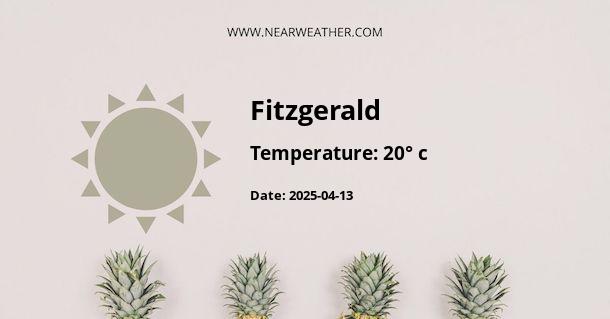Fitzgerald, Australia: Climate and Weather Year Round
Fitzgerald is a beautiful coastal town located in Western Australia. It is known for its stunning landscapes, pristine beaches, and unique wildlife. If you are planning a visit to Fitzgerald, it is essential to understand the climate and weather patterns throughout the year to make the most of your trip. In this guide, we will explore the climate and weather conditions in Fitzgerald, Australia, throughout the year.
Climate
Fitzgerald falls under the Mediterranean climate classification. This means that it experiences mild, wet winters and hot, dry summers. The region is influenced by the Indian Ocean, which contributes to the overall climate patterns.
Temperature
The temperature in Fitzgerald varies significantly throughout the year. Summers, which span from December to February, are generally hot with average daily temperatures ranging from 25°C to 32°C (77°F to 89.6°F). It is not uncommon for temperatures to reach the mid-30s Celsius (95°F) during heatwaves.
On the other hand, winters in Fitzgerald, which occur from June to August, are relatively mild, with average daytime temperatures ranging from 15°C to 20°C (59°F to 68°F). The nights can get cooler, with temperatures dropping to around 8°C to 12°C (46°F to 53.6°F).
It is important to note that temperature extremes can occur occasionally, so it is always a good idea to check the weather forecast before your visit and pack accordingly.
Rainfall
Fitzgerald experiences a Mediterranean climate, which means it has distinct wet and dry seasons. The majority of rainfall occurs during the winter months, with June being the wettest month. On average, Fitzgerald receives around 800 mm (31.5 inches) of rainfall per year.
During the summer months, rainfall is scarce, and the region experiences dry conditions. This can contribute to an increased risk of bushfires, so visitors should always be cautious and follow any fire bans or warnings in place.
Wind
Being a coastal town, Fitzgerald is prone to coastal winds. During the summer months, particularly in the afternoons, the region experiences sea breezes that can provide some relief from the heat. These breezes can also be beneficial for outdoor activities such as sailing and windsurfing.
However, during the winter months, stronger winds can occur, especially during stormy weather. It is important to be mindful of these conditions, especially if you plan on engaging in water activities.
Best Time to Visit
The best time to visit Fitzgerald depends on personal preferences and the type of activities you plan to engage in. If you enjoy warm weather and want to make the most of the beaches, hiking trails, and outdoor activities, the summer months from December to February are ideal. However, be prepared for the possibility of extreme heat during this time.
For those who prefer milder temperatures and want to explore the beautiful landscapes without the summer crowds, the months of March to May and September to November are recommended. During these months, the weather is generally pleasant, and you can enjoy outdoor activities comfortably.
Summary
Fitzgerald, Australia, experiences a Mediterranean climate with hot, dry summers and mild, wet winters. The temperature ranges from 25°C to 32°C (77°F to 89.6°F) during the summer months and 15°C to 20°C (59°F to 68°F) during winter. The region receives around 800 mm (31.5 inches) of rainfall per year, with the majority occurring during the winter months. It is important to be mindful of the coastal winds, especially during stormy weather. The best time to visit Fitzgerald is subjective, but the summer months offer warm weather for beach activities, while spring and autumn provide milder temperatures for exploring the stunning landscapes.
A - Fitzgerald's Latitude is -42.750000 & Longitude is 146.633331.
A - Weather in Fitzgerald is 20° today.
A - Climate Conditions in Fitzgerald shows light rain today.
A - Humidity in Fitzgerald is 75% today.
A - Wind speed in Fitzgerald is 11.48 km/h, flowing at 278° wind direction. today.
